This model
is an effective stress model for predicting liquefaction
behavior of sand under seismic loading. FEANX Liquefaction
Model is extended to a full 3D implementation of the modified
UBCSAND model
using
implicit
method. In elastic region,
nonlinear elastic behavior can
be simulated, elastic modulus changes according to the
effective pressure applied. In
plastic region, the behavior is defined by three types
of yield functions : shear
(shear hardening), compression (cap hardening), and pressure
cut-off. In case
of shear hardening, soil densification effect can be taken
into account by cyclic loading.
*
Note - Implicit
Method : Explicit methods calculate the state of
a system at a later time from the state of the system
at the current time, while implicit methods find a solution
by solving an equation involving both the current state
of the system and the later one.
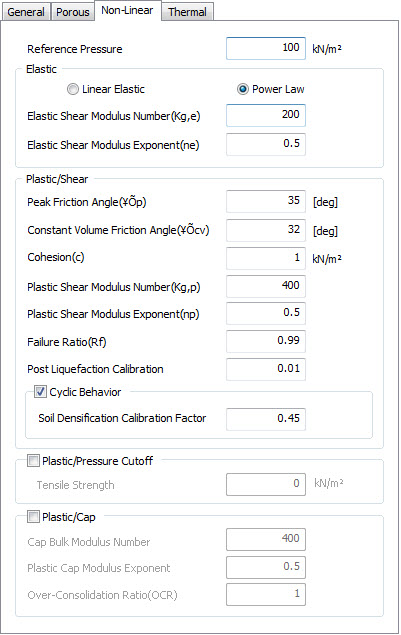
[Elastic]
Shear modulus is updated according
to the effective pressure (p’) based on the following
equation. Allowable tensile stress (Pt) is calculated
using cohesion and friction angle automatically. Poisson’s
ratio is constant and bulk modulus of elasticity will
be determined by following relation.

[Plastic
/ Shear]
Depending
on the difference between mobilized friction angle (Фm)
and constant volume friction angle (Фcv),
shear induces plastic expansion or dilation is predicted.
The Plastic shear strain increment is related to the change
in shear stress ratio assuming a hyperbolic relationship
and can be expressed as follows.

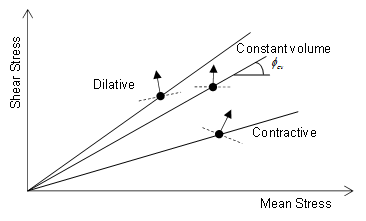 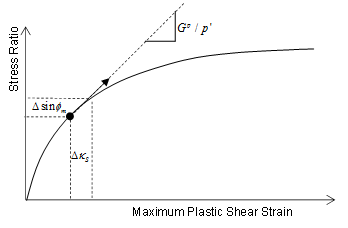
Following
is the summary of parameters for the Modified UBCSAND
model.
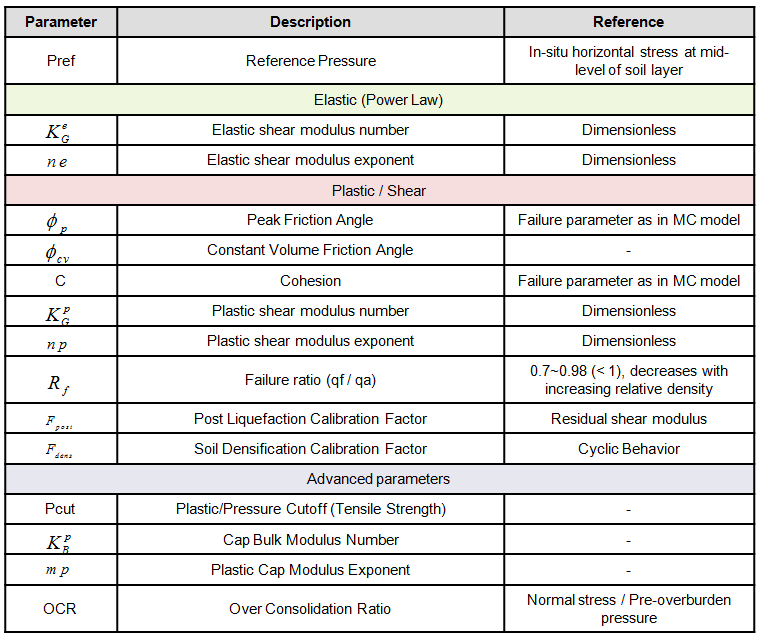
[Model Calibration]
Monotonic and cyclic drained Direct Simple Shear (DSS)
test (Skeleton Response).
Single element test and calibration using Standard Penetration
Test (SPT) - ((N1)60
: Equivalent SPT blow count
for clean sand.
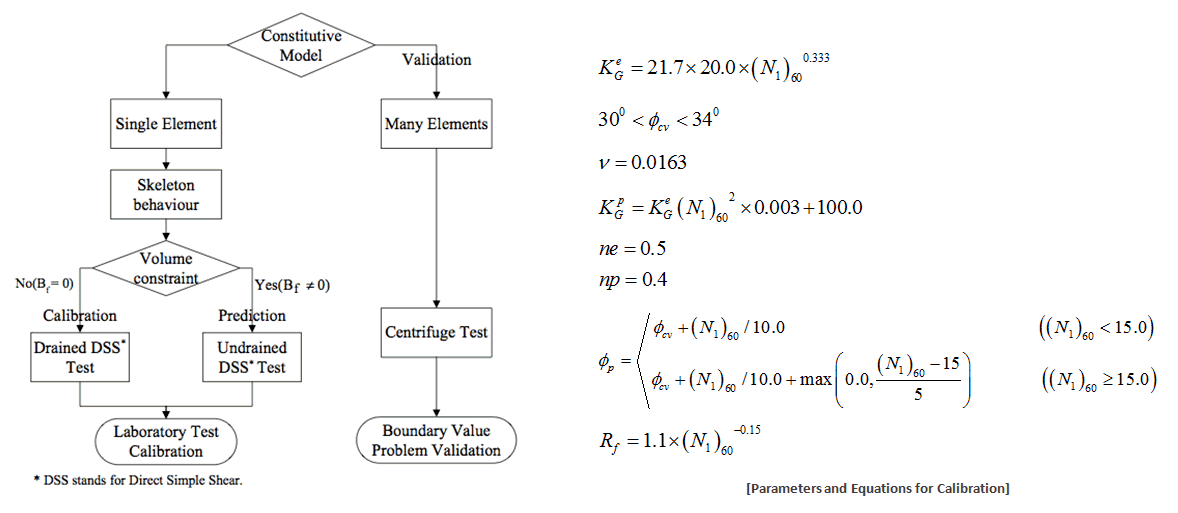

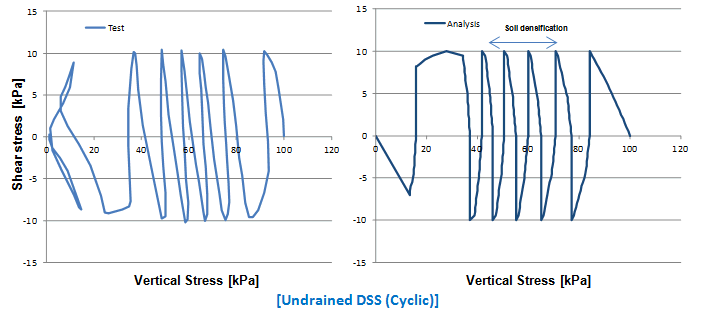
Estimation
of liquefaction results
[Pore
Pressure Ratio (PPR)]
The
ratio of excessive pore pressure change and the initial
effective pressure.

Δpw |
Excessive Pore Pressure Change |
p’init |
Initial Effective
Pressure |
p’current |
Current Effective
Pressure |
[Normalized
Max Stress Ratio]
The ratio
of mobilized friction angle and the peak friction angle
When the
Max stress ratio is reached, the mobilized friction angle
is close to the peak friction angle, liquefaction is triggered
(1 = Liquefaction)

φ’m |
Mobilized Friction Angle |
φ’p |
Peak Friction Angle |

[Nonlinear
Time History Analysis under the earth quake]
|
